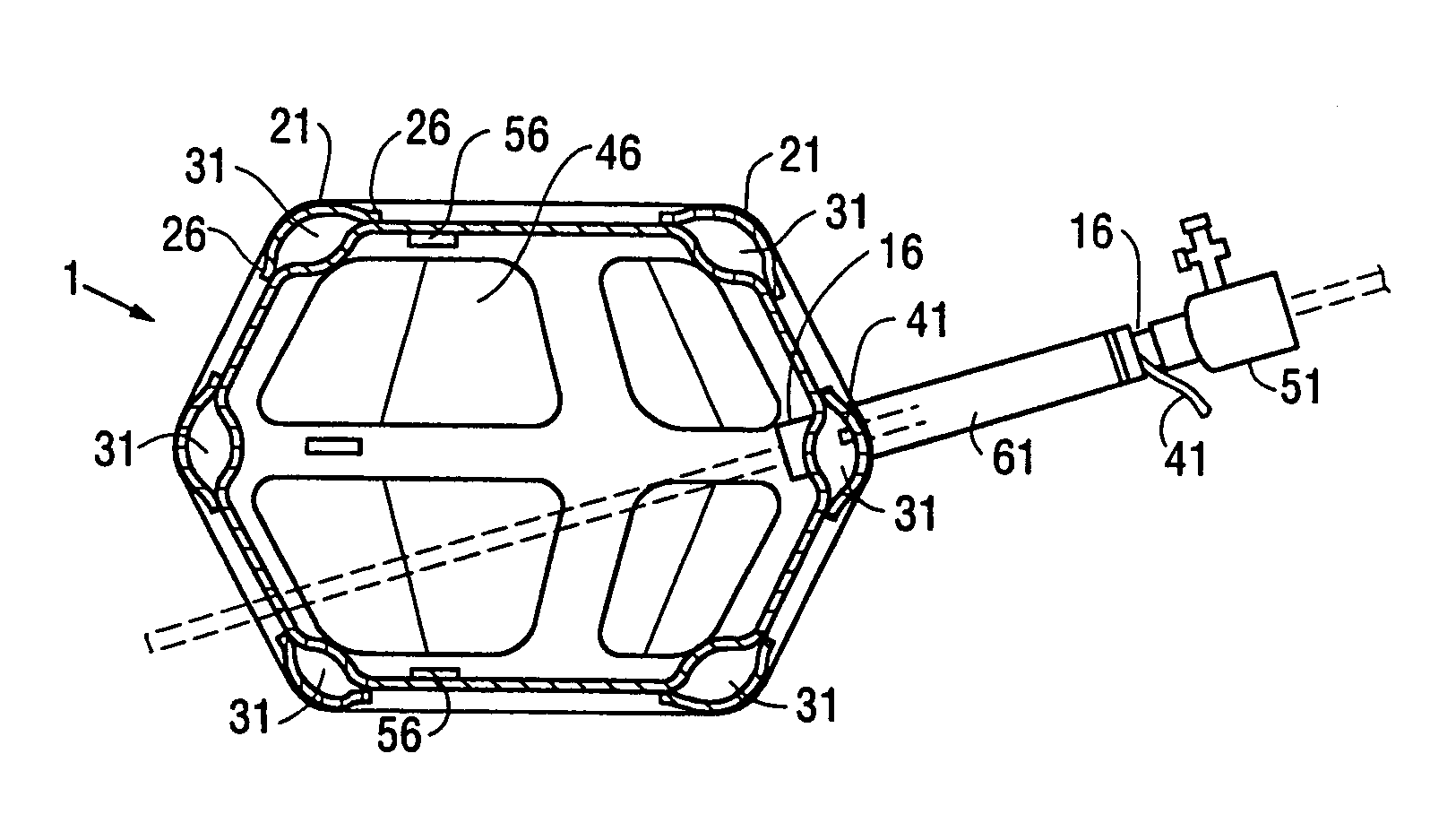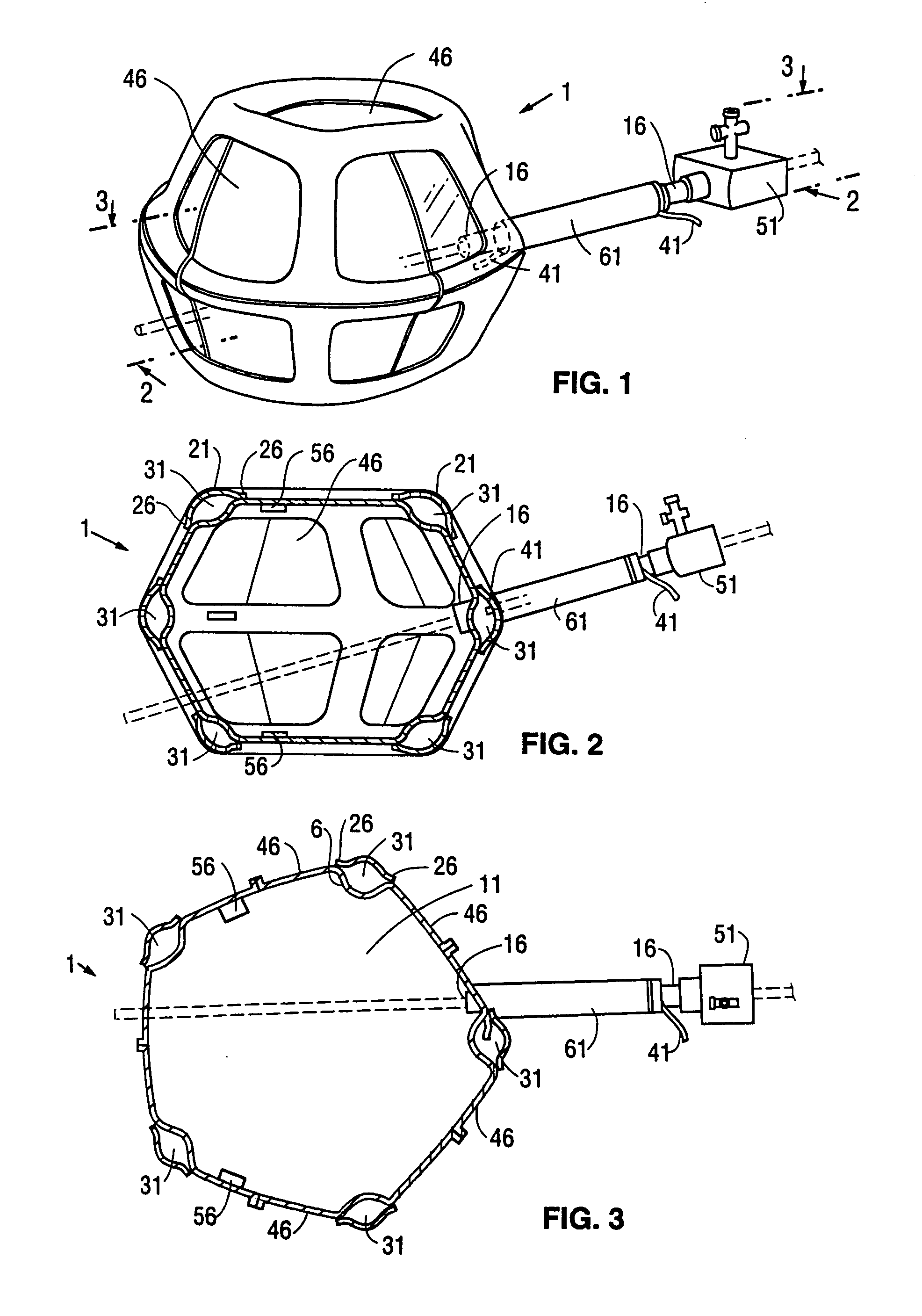Endoscopic inflatable retraction device, method of using, and method of making
a technology retraction device, which is applied in the field of endoscopic inflatable retraction device, method of using, and making method, and can solve the problems of trauma to the retracted organ or tissue, delay the patient's recovery, and inconvenient us
- Summary
- Abstract
- Description
- Claims
- Application Information
AI Technical Summary
Benefits of technology
Problems solved by technology
Method used
Image
Examples
Embodiment Construction
A. Inflatable Retraction Devices
[0078]1. Type IA Retraction Device—Basic Embodiment
[0079]FIGS. 1, 2, and 3 show perspective, and vertical and horizontal cross sectional views, respectively, of a first embodiment 1 of a retraction device according to the invention. This type of retraction device has an additional inflatable chamber and will be designated as a Type I retraction device. The Type I retraction device shown in FIGS. 1, 2, and 3 with a segmented additional chamber will be designated a Type IA retraction device. The retraction device is shown in its inflated condition. The retraction device 1 comprises a main envelopes 6 enclosing a main inflatable chamber 11. The main envelope 6 is made of a relatively inelastic and tough film of a plastic such as Mylar®, polyethylene, or polyurethane. The preferred material for the main envelope 6 is a polyethylene and nylon composite. The thickness of the main envelope 6 is typically from 0.5 to 5 mils (13 to 130 microns). The proximal e...
PUM
 Login to View More
Login to View More Abstract
Description
Claims
Application Information
 Login to View More
Login to View More - R&D
- Intellectual Property
- Life Sciences
- Materials
- Tech Scout
- Unparalleled Data Quality
- Higher Quality Content
- 60% Fewer Hallucinations
Browse by: Latest US Patents, China's latest patents, Technical Efficacy Thesaurus, Application Domain, Technology Topic, Popular Technical Reports.
© 2025 PatSnap. All rights reserved.Legal|Privacy policy|Modern Slavery Act Transparency Statement|Sitemap|About US| Contact US: help@patsnap.com



